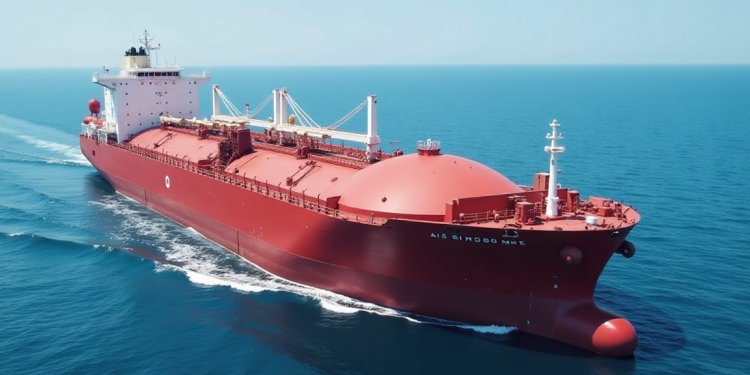LNG Canada, a Shell-led initiative, is facing technical difficulties as it increases production at its Kitimat liquefied natural gas plant.
This has led to at least one LNG tanker being diverted from the facility recently without its superchilled fuel, Reuters quoted four sources and LSEG ship tracking data in a report.
The plant is Canada’s first major LNG export facility, and North America’s first on the west coast, offering direct access to Asia, the world’s largest LNG market.
When fully operational, the facility is anticipated to convert approximately 2 billion cubic feet of gas per day (bcfd) to LNG. This is expected by market participants to positively impact Canadian natural gas prices.
Despite fresh demand from LNG Canada’s July 1 startup, Western Canadian natural gas prices remain depressed due to a persistent supply glut.
On Tuesday, the daily spot price at the AECO storage hub in Alberta Energy Company was $0.22 per mmBtu. This contrasts with the US Henry Hub benchmark price of $3.12, according to LSEG data.
LNG Canada’s ambitious project, which consumed nearly seven years in its construction phase, is currently facing operational challenges.
Operational challenges
According to two of the four available sources, the first plant, also referred to as a “train,” is functioning at less than half of its intended capacity.
This underperformance raises questions about the project’s efficiency and its ability to meet initial production targets.
The extended construction timeline and the subsequent operational limitations highlight potential complexities in large-scale energy infrastructure development, encompassing unforeseen technical hurdles, supply chain disruptions, or market shifts that might impact the project’s output.
According to the report, the facility’s Train 1 has encountered technical problems with both a gas turbine and a Refrigerant Production Unit (RPU).
An LNG Canada spokesperson indicated that a new facility of the joint venture’s size and scale might encounter operational challenges during its production ramp-up and stabilisation phases.
Diverted shipments and technical issues
LSEG ship tracking data indicated that Shell has diverted at least one empty LNG vessel to Peru, while other tankers are still in the vicinity of the facility.
According to LSEG ship tracking data, the LNG tanker Ferrol Knutsen, with a capacity of 170,520 cubic meters, initially indicated it was en route to the Kitimat port. However, it has since altered its course and is now off the coast of California, heading towards Peru.
LNG Canada is a joint venture comprising several international companies: Shell, Malaysia’s Petronas, PetroChina, Japan’s Mitsubishi Corp, and South Korea’s KOGAS.
Export projections
LNG Canada is projected to have an export capacity of 14 million metric tonnes per annum (mtpa) when it reaches full operational status, according to company statements.
The facility has already exported four cargoes, with the inaugural shipment occurring on July 1. An LNG Canada spokesperson announced that an additional shipment is anticipated soon.
As the plant transitions from its initial operational phase to a consistent shipping schedule, the rate of exports is expected to accelerate, according to the spokesperson.
The spokesperson said:
In regular operations in Phase 1, we anticipate loading one export cargo from our facility every two days.
The post Why Shell-led LNG Canada project faces production challenges appeared first on Invezz








